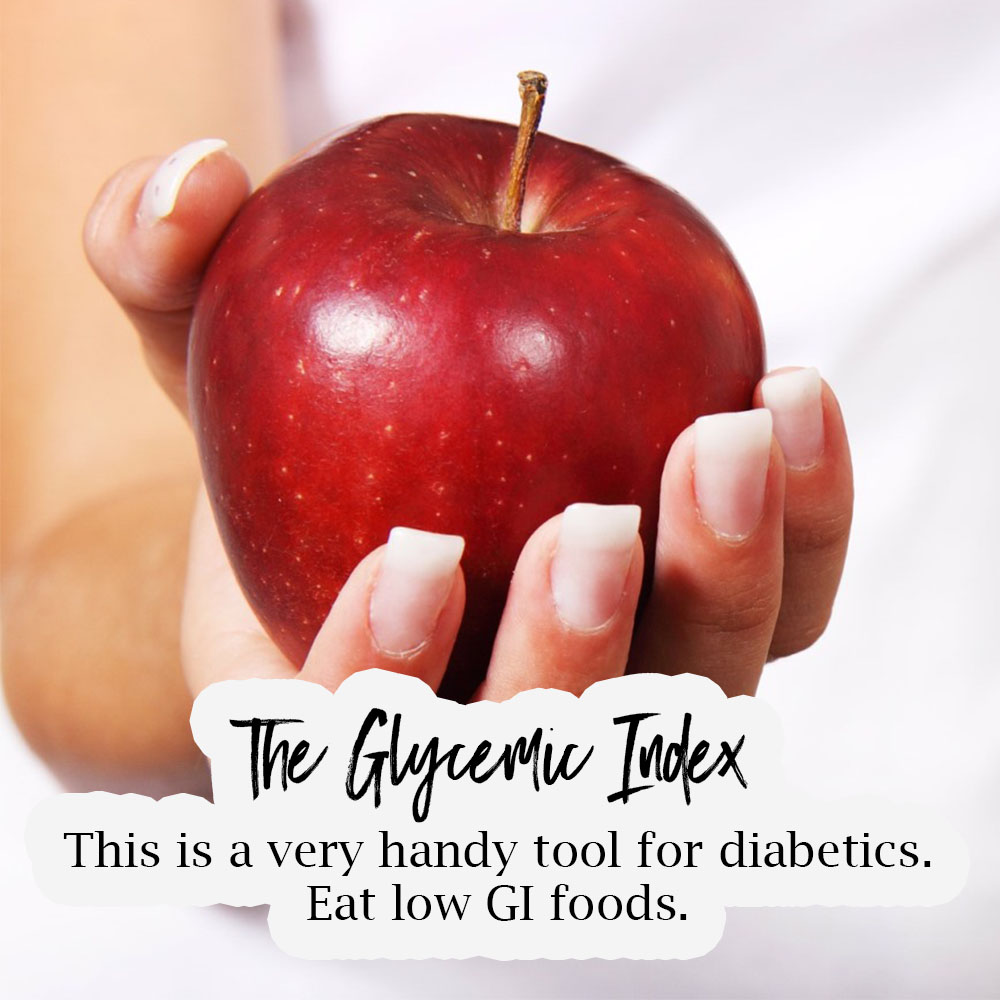What is the Glycemic Index?
The Glycemic Index or Glycaemic Index, often referred to as GI, can a useful tool for diabetics. It can be helpful for practically anyone who wishes to educate themselves on how quickly glucose levels in the blood rise after eating a certain kind of food.
This index provides numerical values for foods. You can easily use the Internet at home or on your phone to find out the glycemic index of a particular food. The GI estimates how much each gram of available carbohydrate, which is the total carbohydrate without the fiber content, in a food raises a person’s blood sugar level after they eat it. This measurement is relative to consumption of pure glucose, which has its own glycemic index of 100.
One of the things to take into consideration with the glycemic index is that it does not factor in the actual amount of carbohydrate that is consumed in the serving. The Glycemic Load however, a related measure, takes this into account by multiplying the carbohydrate content of the actual serving by the glycemic index of the particular food.
Foods that are considered to be Low GI measure in at 55 or less. Medium GI foods are considered to be 56-69 and High Glycemic Index foods measure at 70 and above. Understanding your portion size or the amount of food you are eating per serving and how fast this food will be broken down into glucose, will enable you to make wiser food choices.
If you do want that extra glass of wine or piece of chocolate cake, you will be able to calculate the rest of your daily meals to ensure you are balancing your carbohydrate intake safely.
Avoid High Glycemic Foods
We all know, or need to know, that sweets and processed foods are not healthy. Carbohydrates which break down easily during digestion and rapidly release glucose into our bloodstream are considered to be high glycemic foods. Be wary of pure fruit juices, salad dressings, condiments, health bars and cereals, white rice, potatoes, white bread, ice cream, chocolate, oranges and bananas. These foods are all considered to be on the higher side of the glycemic index.
Be sure to read labels on condiments, sauces and pre-packaged foods. Even many foods we grew up considering to be healthy can lead you astray. Proportion is everything. Also note that ingredients are listed in the order of abundance; the first ingredient being the most prominent all the way down to the least.
Oftentimes the “pure or natural” ingredient advertised on the packaging will be way down on the bottom of the list! Be a smart consumer. If you have never previously read your food labels, now is the time to start. Your blood sugar and the rest of your body will thank you for taking the time!
Examples of Low Glycemic Foods
Carbohydrates that break down slower and release sugar more gradually into the bloodstream are considered to be low glycemic foods. Wholegrain bread, oats, barley, millet, wheat germ, lentils, baked halibut, soybeans and most beans are some popular choices.
Peaches, strawberries, mangoes, pumpkin seeds, sunflower seeds, peanuts, and most vegetables are also great choices.




